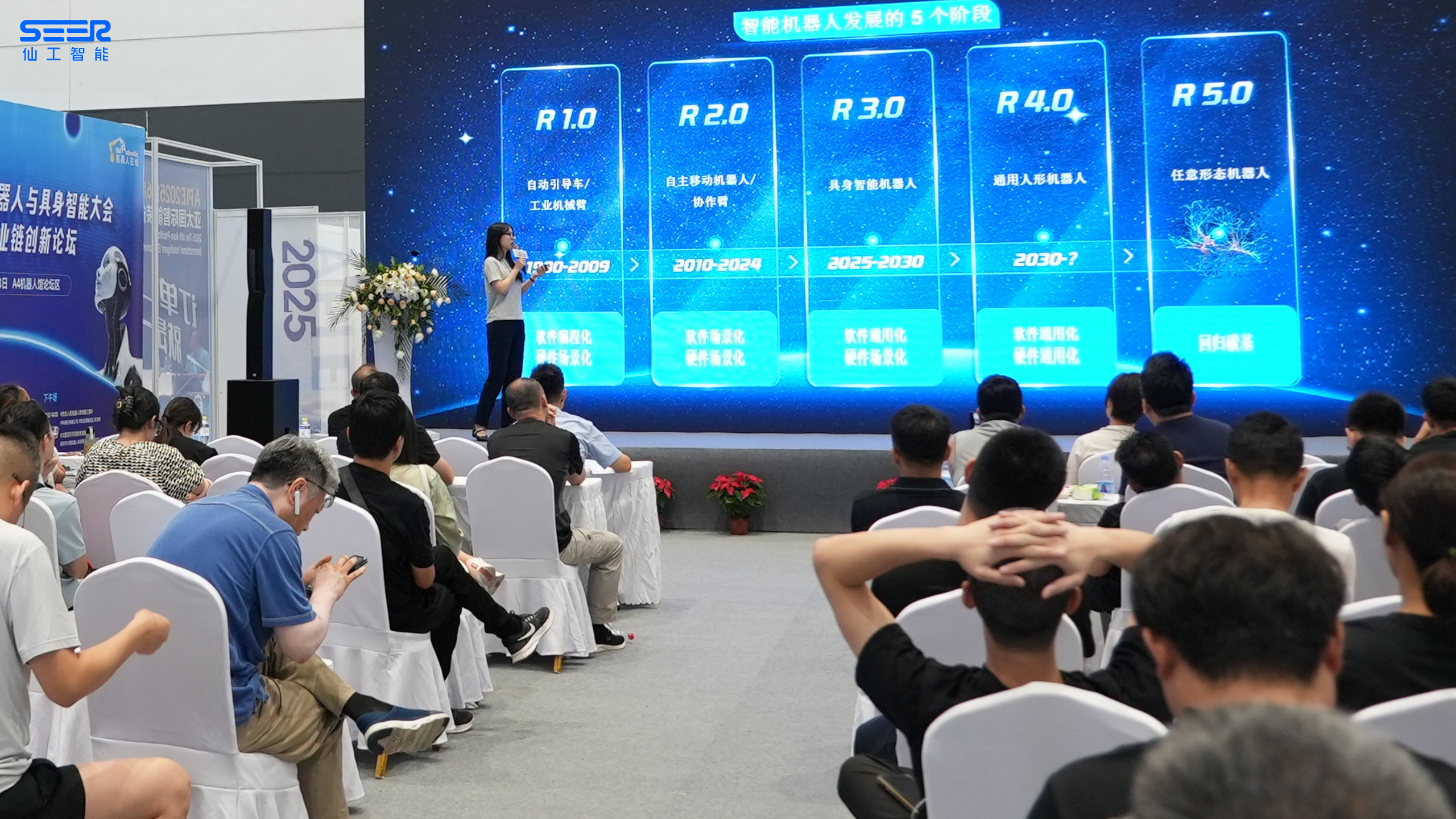DATE: 2025/07/22
SEER Robotics Offers a “New-Old Integration” Solution to Bridge the Last Mile of Embodied AI Commercialization
On July 18, the Asia-Pacific Humanoid Robotics and Embodied AI Conference and Industrial Innovation Forum was held at the Qingdao International Convention and Exhibition Center (Hongdao Pavilion), focusing on breakthroughs and industrial applications in humanoid robotics.
Miya Gong, Marketing Director at SEER Robotics, was invited to deliver a keynote speech titled “From Technical Imagination to Industrial Reality: Commercial Applications of Embodied AI.” In her presentation, Gong addressed the core challenges hindering the large-scale commercialization of embodied intelligence—data, feedback, and controllability—and systematically introduced SEER Robotics’ innovative solution grounded in the concept of “New-Old Integration.”

Industry Bottlenecks: Three Core Pain Points
Miya Gong identified the major technical and practical obstacles currently constraining the embodied AI industry:
1. Data Dilemma
Training humanoid robots requires extensive real-world data. However, the high cost of data collection and the behavioral mismatch between robots and humans often lead to data distortion, making it difficult to support effective model training.
2. Feedback Limitations
Conventional sensors fall short of replicating the fine tactile perception of human skin, limiting robots’ ability to engage in complex interactions.
3. Low Controllability
With more than 40 degrees of freedom, humanoid robots demand highly sophisticated coordination. Ensuring reliability requires enormous volumes of training data to achieve stable control performance.
“New-Old Integration”: A Pragmatic Approach to Commercialization
To address these shared industry challenges, SEER Robotics has introduced a “New-Old Integration” strategy—a practical and scalable approach aimed at accelerating the industrialization of embodied intelligence through two complementary pathways.
Approach 1: New Technologies + Legacy Products
Revitalizing traditional equipment with intelligent capabilities
SEER Robotics used intelligent forklifts as a verification platform to integrate cutting-edge embodied AI technologies, including multi-layer semantic mapping, end-to-end navigation, vision-language alignment (VLA), and reinforcement learning. In May, the company launched its first embodied intelligent forklift, validating the feasibility of its solution and moving toward mature deployment.
Key Advantages
1. Data Reusability
The system leverages extensive historical operation data from human forklift drivers, effectively circumventing the data collection dilemma.
2. Simplified Feedback Requirements
Only basic force sensing and visual localization are required, eliminating the need for expensive and complex tactile sensors.
3. Focused Control Scope
Core control is limited to wheel steering and fork lifting, reducing algorithmic and system complexity by focusing on low degrees of freedom.
Approach 2: Legacy Technologies + New Products
Creating a general-purpose AGI brain for intelligent robots
Building on years of expertise in robotic control systems, SEER Robotics has developed the SRC-5000, the world’s first integrated embodied AI controller. The SRC-5000 resolves the coordination bottleneck across robotic “hand-eye-foot” systems. It has already been deployed in wheeled humanoid robots that are currently undergoing field testing by enterprise clients.
Dual Flywheel Strategy: Build Your Own Robot Fleet Within Days
Miya Gong reaffirmed SEER Robotics’ long-term mission—“SEER Robotics, Build your own robot fleet within days!”—and introduced the company’s dual-flywheel approach, which drives sustainable growth through technological and platform synergies.
1. Platform Flywheel: Scaling an Open Ecosystem
SEER Robotics provides industry-leading robot control systems compatible with over 300 plug-and-play accessories. Its Nebula System offers a one-stop robot selection platform covering more than 1,000 robot models. This significantly lowers the barriers to development and deployment while fostering an open and diverse robotics ecosystem.
2. Technology Flywheel: Evolving Core Capabilities
The wide range of application scenarios generates large-scale data that feeds directly into AGI-based optimization of the SRC controller series. This iterative feedback loop accelerates the development of robust, generalized software and drives the continuous evolution of SEER Robotics’ AGI brain.



/1.png?x-oss-process=image/format,webp)
/1.png?x-oss-process=image/format,webp)
